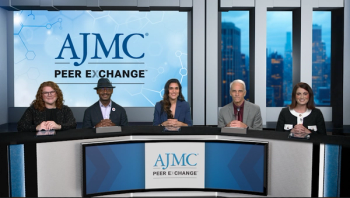
Evaluating Schizophrenia Treatment Effectiveness
Navigating the efficacy of schizophrenia treatment selection.
Episodes in this series

John J. Miller, MD: If we look specifically at anti-psychotic treatments, at what point will you conclude that a patient is a partial or a nonresponder? In your practice, what do you consider an adequate trial of medication before moving on to a different agent?
Carlos Larrauri, APRN: As a clinician [and] psychiatric nurse practitioner, I look at a couple [of] factors to determine if the patient is a partial or nonresponder to an antipsychotic. The first step is almost always doing an assessment, getting a sense of their baseline, possibly what they were like even before their episode or certainly what they were like before treatment to see if the medical intervention is moving the needle. It’s important to also ensure that an adequate trial of medication is given and that there’s sufficient time for the medication to take effect. What I consider an adequate trial of medication is typically 4 to 6 weeks, although this can vary. As you mentioned earlier, it’s important to also recognize that when traditionally atypicals aren’t working, we could move to clozapine which is often a treatment at a last resort but is underutilized which can have a profound effect on people who are not responsive to other atypicals. It’s important to look at what matters to the patient, which is often functioning. Functioning is key for many patients and families, and so if the improvements aren’t clinically meaningful, they don’t reduce symptoms enough or they don’t lead to what the patient’s goals are, we might consider them a partial responder in that case. Other factors include assessing adherence and things that could impair adherence, [such as] adverse effects of medication, the degree of self-awareness of the illness, or socioeconomic or health system barriers. We know that, for example, even relatively small amounts of copays, $5, $10, and $15, could be a barrier to people refilling their medications. It’s important to consider other psychosocial and cultural factors. For instance, I’m a Hispanic person and I treat Hispanic patients sometimes in my community; there are misconceptions about medications being addictive and things like that when that’s certainly not the case. It’s important also to look at the patient’s perspective and the family’s perspective and take this comprehensive and holistic approach to assessing whether a patient is responding to medications and whether it’s helping them achieve what ultimately matters to them, their goals, and functional developmental milestones. I will add 1 more thing. One thing I see as a clinician is subtherapeutic dosages of medication. I understand the importance of starting low and going slow, but often, I think it’s important that you follow the evidence-based guidelines for what is the therapeutic dose of the medication. If not, you’re on a subtherapeutic dose; you’re really getting all the cost and none of the benefit. You’re getting a lot of the adverse effects but none of the anti-psychotic properties, so it’s important that clinicians be familiar with the guidelines and take that into account. It’s really a combination of the clinician’s expertise [and] the patient’s preferences and values, and it’s a relationship together that a decision is made in terms of whether the treatment is helping the patient move forward.
John J. Miller, MD: Great, thank you. Dr [Caroline] Carney, what would you say are the more common adherence barriers for patients, and then part 2 of that would be, how can payers, providers, and family help improve compliance and adherence so that we can help maximize recovery?
Caroline P. Carney, MD, MSc, FAPA, FAPM, CPHQ: Building on what Carlos said, I think some factors include what that individual’s experiencing. “I started my medication; I have these adverse effects and nothing is better.” So we have to address that with the right kind of psychoeducation, helping that individual and their family or guardians understand when that medication will start working and what we should see from that medication. The second is the thing we’ve discussed a lot earlier in terms of social determinants of health. Can I afford the copay? Do I have transportation to the pharmacy? Do I have a stable mailing address if I could have a 90-day supply mailed to me for instance? If I am homeless, is my medication being stolen? There are all sorts of factors like that, that have to be considered in terms of that adherence question. The third is just addressing [that] the adverse effect profile that an individual has is a very common reason for stopping a medication. The treatment for some of those adverse effects is changing a medication to see if a different one would work better for that person in terms of changing that adverse effect profile. I think those are really key, and providing education to the family about this is critical. [There are] individuals who may cheek their medications; we see this in the inpatient setting quite a lot. [We need] to help them understand, especially when someone is acutely psychotic and delusional, [and their resistance to] having someone say “here’s a pill or a shot” is sometimes something that has to be overcome in working with that individual, gaining their trust, and helping them to understand the importance of the medication and their treatment. If that individual is getting cognitive therapy or any other psychosocial types of treatments, adherence to those is an issue as well; getting to those appointments when someone has avolition is also a challenge. I think we have to look at adherence more than medications but beyond everything else. From a managed care perspective, we do a lot of medications for reconciliation. We often think of that more in the Medicare space of all kinds of chronic medical conditions. In this space, it’s critical to look at MedRec also as an intervention to look at data. We have a program particularly designed around giving the prescriber feedback so that the prescriber knows that I can see in claims who is or isn’t filling that medication. Even if someone fills, they may not take it, but a signal of them not taking it all is never seeing a fill in the data. So being able to provide that kind of feedback, pharmacy data, or real-time data, [is] one of the earliest and best signals we have to help.
John J. Miller, MD: I get those notices.
Caroline P. Carney, MD, MSc, FAPA, FAPM, CPH: Well, ours are nicer.
John J. Miller, MD: I appreciate them.
Caroline P. Carney, MD, MSc, FAPA, FAPM, CPHQ: We have pharmacists who are trained in psychopharmacology who do outreach to providers to give them that assistance in evidence-based treatment and address things like polypharmacy, address multiple second-generation antipsychotics being used in the same individual, who address drug interaction, dangerous combinations of drugs, and those sorts of things. We see in the end a closure of quality gaps as well as a marked improvement in the cost of care: around $140 to $160 per member per month savings when those prescribers have the information and change their patterns of care.
John J. Miller, MD: That’ saving is related to the person doing better?
Caroline P. Carney, MD, MSc, FAPA, FAPM, CPHQ: That’s right.
John J. Miller, MD: Maybe not requiring a hospitalization, remaining stable.
Caroline P. Carney, MD, MSc, FAPA, FAPM, CPHQ: That’s exactly right, and that’s only direct cost. ’Adherence is such a key issue, but again, adherence beyond medications to the whole treatment plan.
Transcript edited for clarity.
Newsletter
Stay ahead of policy, cost, and value—subscribe to AJMC for expert insights at the intersection of clinical care and health economics.








































